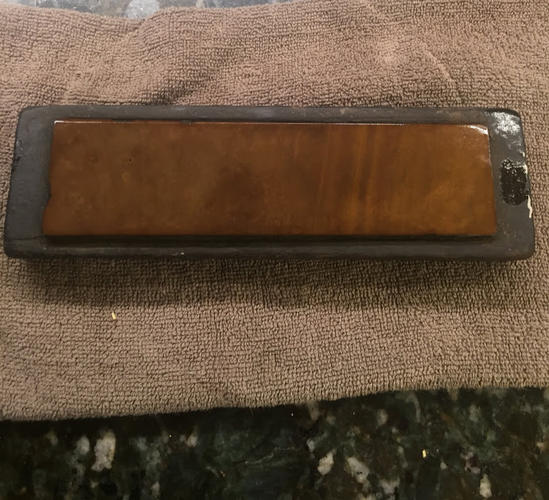Results 1 to 10 of 21
Threaded View
-
05-22-2018, 08:10 PM #1
 Trying to identify old hone. Help appreciated!
Trying to identify old hone. Help appreciated!
I just finished lapping up an old stone that was covered in old grease and dished out by a couple of millimeters. I was told that its an Arkansas stone. In general I know that the stones are more identifiable by their specific gravity, but as it is in the block and its a family heirloom that's not feasible at the moment. I flattened the stone using loose silicone carbide grit (very course, not sure what grit as it was from an unmarked bag for rock polishing) and then finished it up on wet/dry sandpaper up to 600 over a flat tile. It seems softer than my surgical black Arkansas stone but left a great edge on my every day knife ( I haven't tried out any razors on it yet). I forgot to take before and after photos but it was a hell of a transition from greasy black to what can be seen now. Here's a shot of the stone with a layer of mineral oil on it. I'm curious to know what it is, any ideas?
All input is greatly appreciated!
-Sailor
https://photos.app.goo.gl/ggzFwJpmbuvmtWjy2
 "One must always choose the lesser of two weevils." - Cpt. Jack Aubrey
"One must always choose the lesser of two weevils." - Cpt. Jack Aubrey


 15Likes
15Likes LinkBack URL
LinkBack URL About LinkBacks
About LinkBacks






 Reply With Quote
Reply With Quote